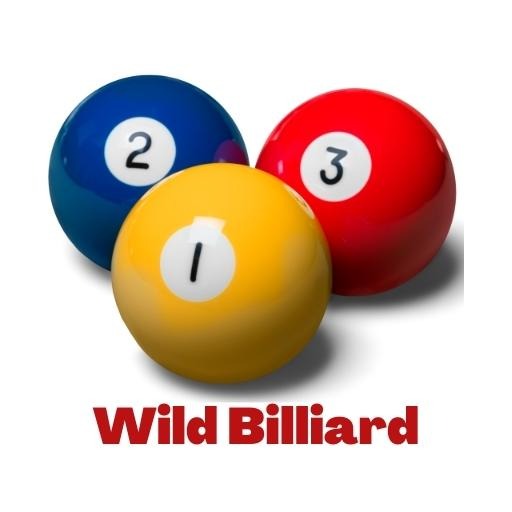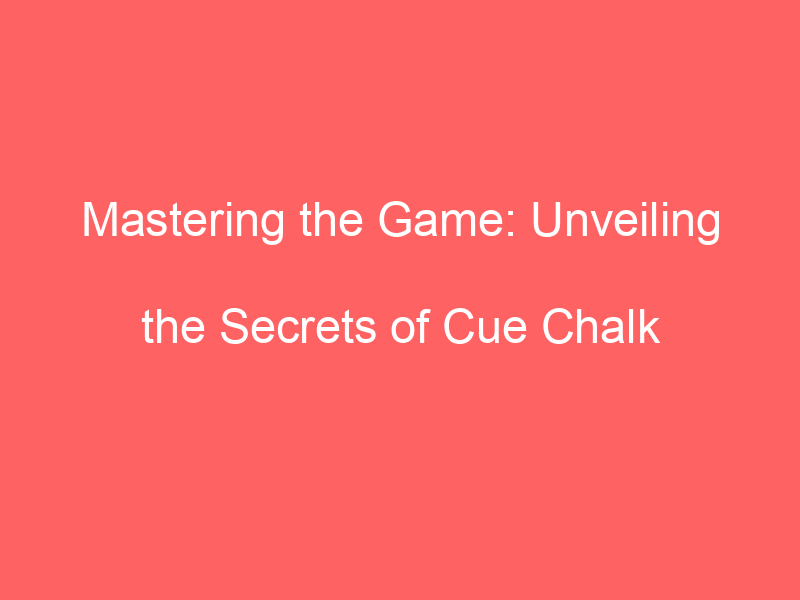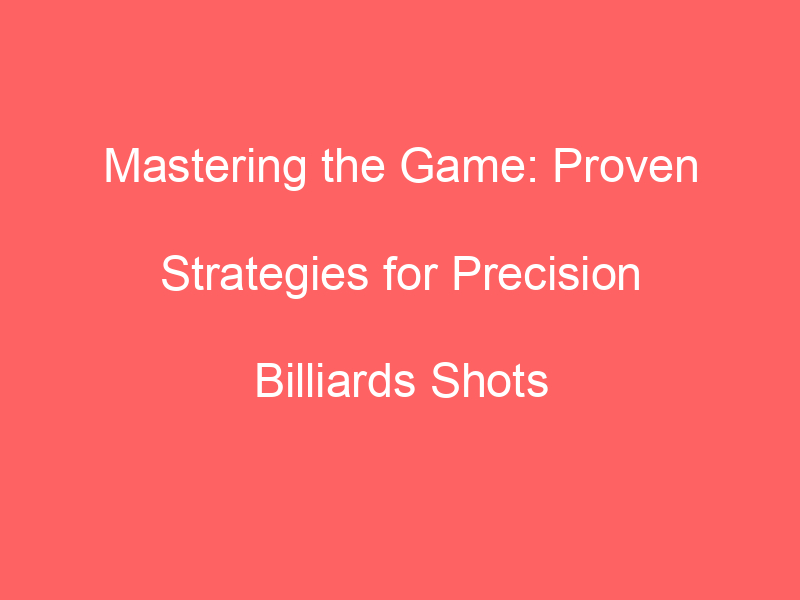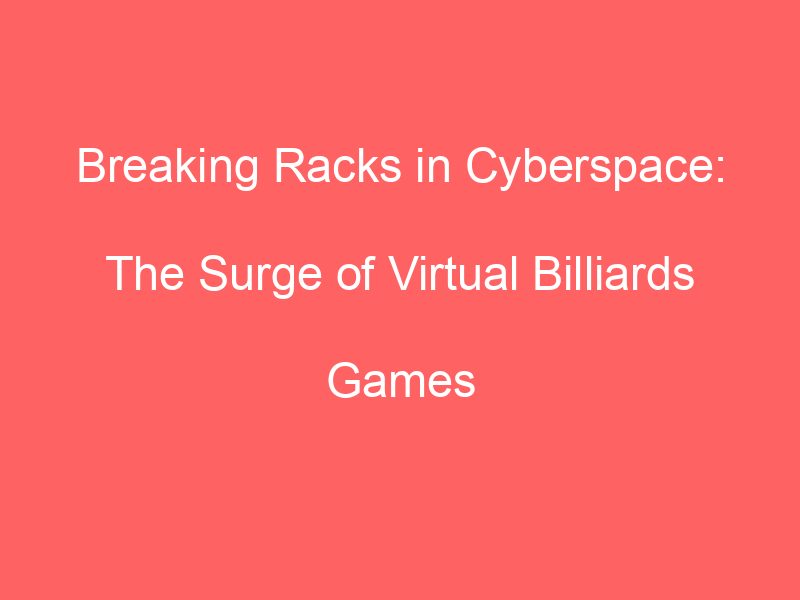
Introduction to Cue Chalk
Whether you’re a seasoned billiards player or a beginner, you’ve probably noticed the small cube of chalk that players use on their cue sticks. This is known as cue chalk, and it plays a crucial role in the game of billiards. In this article, we will delve into the importance of cue chalk and its history.
-
- Understanding the Importance of Cue Chalk
Cue chalk is not just a random accessory in billiards; it’s a game-changer. It is applied to the tip of the cue stick to increase friction between the cue and the ball. This added friction helps prevent the cue from sliding off the ball, a mishap known as a ‘miscue’. By reducing the chances of a miscue, cue chalk enhances the player’s control over the ball’s direction and speed. In essence, cue chalk can significantly improve a player’s performance and precision in the game.
-
- History and Evolution of Cue Chalk
The use of cue chalk dates back to the early days of billiards. Initially, players used a substance called ‘chalk’, which was primarily composed of calcium carbonate. However, this type of chalk did not provide the desired friction and often led to miscues.
Over time, the composition of cue chalk evolved. Modern cue chalk, unlike its predecessor, contains silica and corundum, which significantly increase friction and reduce the chances of miscues. This evolution of cue chalk has not only improved the quality of play but also added a new layer of strategy and skill to the game of billiards.
Now that we have a basic understanding of cue chalk and its importance, let’s delve deeper into the science behind it, how to choose the best cue chalk, and its proper usage. We will also explore the art of cue chalk in billiards and how mastering it can help you improve your game.
The Science Behind Cue Chalk
Have you ever wondered why billiard players always chalk their cues before making a shot? The answer lies in the fascinating science behind cue chalk. Let’s dive in and understand how it works.
Cue Chalk Science: How it Works
There are two main aspects to understand when it comes to the science of cue chalk: the role of cue chalk in enhancing friction and the physics involved in its use.
-
- Role of Cue Chalk in Enhancing Friction
Cue chalk is not just for show; it plays a vital role in the game of billiards. When a player strikes the cue ball, the tip of the cue stick and the ball come into contact for a fraction of a second. During this time, the chalk provides the necessary friction between the cue tip and the ball. This friction is crucial as it prevents the cue tip from sliding off the ball, allowing the player to hit the ball accurately and with the desired spin.
-
- Understanding the Physics of Cue Chalk
The physics of cue chalk is all about understanding the interaction between the chalk, the cue tip, and the ball. When a player applies chalk to the cue tip, it increases the coefficient of friction. This means that it increases the grip between the cue tip and the ball. The more the grip, the less likely the cue is to slip off the ball. This allows the player to apply different spins and strikes to the ball, enhancing their control over the game.
In conclusion, the science behind cue chalk is fascinating and plays a crucial role in the game of billiards. It enhances friction, prevents miscues, and allows players to have better control over their shots. So, the next time you see a player chalking their cue, you’ll know the science behind it!
Billiards Chalk Vs Snooker Chalk
When it comes to cue sports, the type of chalk you use can make a significant difference in your performance. Let’s delve into the differences between billiards chalk and snooker chalk, comparing their compositions and effectiveness in different games.
-
- Comparing the compositions
Billiards chalk and snooker chalk may seem similar at first glance, but their compositions differ. Billiards chalk is typically composed of silica and corundum, which provide a good grip on the cue tip. On the other hand, snooker chalk is usually made of a mixture of fine abrasives and does not contain silica. This difference in composition can affect the way the chalk adheres to the cue tip and influences the shot.
-
- Effectiveness in different games
Billiards chalk is designed for games that require a lot of spin on the ball, such as pool and carom. Its composition allows it to provide a high level of friction, which is essential for executing complex shots. Snooker chalk, however, is more suited for games that require precision and control over spin, like snooker. Its fine composition allows for a smoother glide of the cue tip over the ball, reducing the chance of miscues.
In conclusion, the choice between billiards chalk and snooker chalk ultimately depends on the type of game you’re playing and the shots you intend to make. Understanding the differences between these two types of chalk can help you make an informed decision and improve your game.
Choosing the Best Cue Chalk
When it comes to billiards, the right cue chalk can make a significant difference in your game. It’s not just about the color or the brand; there are several factors to consider when choosing the best cue chalk for your needs.
Factors to Consider
Here are some key factors to keep in mind when selecting your cue chalk:
-
- Quality of the chalk
The quality of the chalk is crucial. High-quality chalk will provide better friction between the cue tip and the ball, resulting in more accurate and consistent shots. It will also last longer, meaning you won’t have to reapply as often. Look for chalk that is non-abrasive and has a good grip.
-
- Compatibility with cue tips
Not all chalks are compatible with all cue tips. Some chalks work better with softer tips, while others are better suited to harder tips. It’s important to choose a chalk that matches your cue tip to ensure optimal performance.
-
- Price and brand reputation
While price is a factor, it shouldn’t be the only one. Sometimes, cheaper chalks can end up costing more in the long run if they wear down your cue tip or don’t provide consistent results. Consider the reputation of the brand and reviews from other users when making your decision.
In conclusion, choosing the best cue chalk involves considering the quality of the chalk, its compatibility with your cue tip, and the price and reputation of the brand. By keeping these factors in mind, you can find the chalk that will help you elevate your game to the next level.
Top 5 Best Cue Chalks
Choosing the best cue chalk can significantly improve your game. Here, we will review the top five best cue chalks available in the market, discussing their pros and cons.
- Reviewing the best brands in the market
Let’s dive into the top five cue chalks that professional players swear by:
- Predator Cue Chalk
- Master Billiard Cue Chalk
- Silver Cup Billiard Chalk
- Kamui Pool Cue Chalk
- Triangle Cue Chalk
- Pros and cons of each brand
| Brand | Pros | Cons |
|---|---|---|
| Predator Cue Chalk | Excellent grip, reduces miscues | Higher price range |
| Master Billiard Cue Chalk | Affordable, widely used | Needs frequent reapplication |
| Silver Cup Billiard Chalk | Good value for money, variety of colors | Not as adhesive as others |
| Kamui Pool Cue Chalk | Long-lasting, minimal residue | Expensive |
| Triangle Cue Chalk | Reliable, good coverage | Can be messy |
Each of these brands has its strengths and weaknesses. Your choice should depend on your personal preferences, the type of cue you use, and your budget.
Proper Usage of Cue Chalk
Understanding how to use cue chalk correctly can significantly improve your billiards game. Let’s explore some techniques and common mistakes to avoid.
Cue Chalk Techniques
Here are some key techniques to keep in mind when using cue chalk:
-
- How to apply chalk on cue tips
Applying chalk to your cue tip is a simple yet crucial process. Start by holding the chalk cube flat against the tip of the cue. Then, gently rotate the cue while keeping the chalk still. Make sure the chalk covers the entire tip, not just the center. This technique ensures an even distribution, providing a better grip on the ball.
-
- Common mistakes to avoid
While chalking your cue seems straightforward, there are common mistakes that players often make. One is over-chalking. Too much chalk can create a dust cloud, which can interfere with your shot. Another mistake is under-chalking. Not using enough chalk can lead to miscues. Lastly, avoid chalking in a grinding motion as it can damage the cue tip over time. Remember, the goal is to lightly coat the tip, not embed the chalk into it.
By mastering these techniques, you can ensure that your cue chalk usage is effective and efficient, leading to improved performance in your billiards game.
Maintenance and Storage of Cue Chalk
Just like any other tool in billiards, cue chalk requires proper maintenance and storage to ensure its longevity and effectiveness. Here are some tips to help you keep your chalk in good condition and prevent it from drying out.
-
- Keeping your chalk in good condition
Proper maintenance of your cue chalk can significantly extend its lifespan. Always ensure to cover the chalk after use to prevent it from getting dirty or contaminated. Avoid dropping your chalk as it can cause it to crumble and become less effective. It’s also advisable to rotate your chalk regularly to ensure even usage. This helps to maintain its shape and prolong its life.
-
- Storage tips to prevent drying out
Storing your cue chalk correctly is crucial to prevent it from drying out. Always store your chalk in a cool, dry place away from direct sunlight. Exposure to heat and humidity can cause your chalk to dry out and crumble. You can also consider investing in a chalk holder or case. This not only protects your chalk from physical damage but also helps to maintain its moisture level, preventing it from drying out.
Remember, good chalk maintenance and proper storage can enhance your game performance. It ensures that your chalk provides the optimal friction between the cue tip and the ball, allowing for more precise and controlled shots. So, take good care of your cue chalk, and it will take good care of your game.
Cue Chalk Art in Billiards
While cue chalk is primarily used to enhance the performance of players in billiards, it has also found its way into the world of art. Let’s explore this creative side of chalk usage and look at some examples of chalk art in professional games.
-
- Exploring the creative side of chalk usage
Chalk art in billiards is a unique form of expression that combines the technical skill of the game with the imaginative prowess of an artist. The chalk, usually used to increase friction between the cue and the ball for better control, becomes a medium for creating temporary masterpieces on the green baize of the billiard table.
Players often use their idle time between shots to draw intricate patterns and designs on the table. This not only serves as a stress reliever but also adds a touch of personal flair to the game. From simple geometric shapes to complex abstract designs, the possibilities are endless when it comes to chalk art in billiards.
-
- Examples of chalk art in professional games
Chalk art has been showcased in several professional billiards games, adding an artistic twist to the competitive atmosphere. For instance, during the 2017 World Championship, a player used his cue chalk to draw a stunning depiction of a dragon on the table. This not only wowed the audience but also demonstrated the player’s artistic talent.
In another memorable instance from the 2019 National Billiards Tournament, a player created a beautiful floral pattern using different colored chalks. The art piece remained on the table throughout the game, serving as a testament to the player’s creativity and adding a unique aesthetic to the match.
So, the next time you pick up a piece of cue chalk, remember that it’s not just a tool for better gameplay. It’s also a canvas for expressing your creativity and adding a personal touch to the game of billiards.
Conclusion: Mastering the Game with Cue Chalk
As we reach the end of our journey exploring the world of cue chalk, it’s time to reflect on the key points we’ve learned and how they can help you master the game of billiards.
-
- Recap of the Importance of Cue Chalk
Cue chalk is not just a simple accessory, but a crucial part of the game. It enhances the friction between the cue tip and the ball, allowing for better control and precision in your shots. We’ve learned that the right chalk can significantly reduce miscues and improve your overall performance.
-
- Final Thoughts on Mastering the Game with the Right Chalk
Mastering billiards is not just about skill and strategy, but also about understanding and utilizing the right tools. Cue chalk is one such tool. Choosing the best chalk, understanding its science, using it properly, and even appreciating its art in the game, can take your performance to a whole new level.
Remember, the game of billiards is a blend of science and art, and cue chalk is a perfect example of this. So, next time you step up to the pool table, remember the importance of cue chalk and use it to your advantage.
“The game of billiards is a game of skill and precision, and the right chalk can be the difference between a win and a loss.” – Anonymous
With the right chalk in your hand, you are not just holding a tool, but a game changer. So, choose wisely, use correctly, and play passionately.













